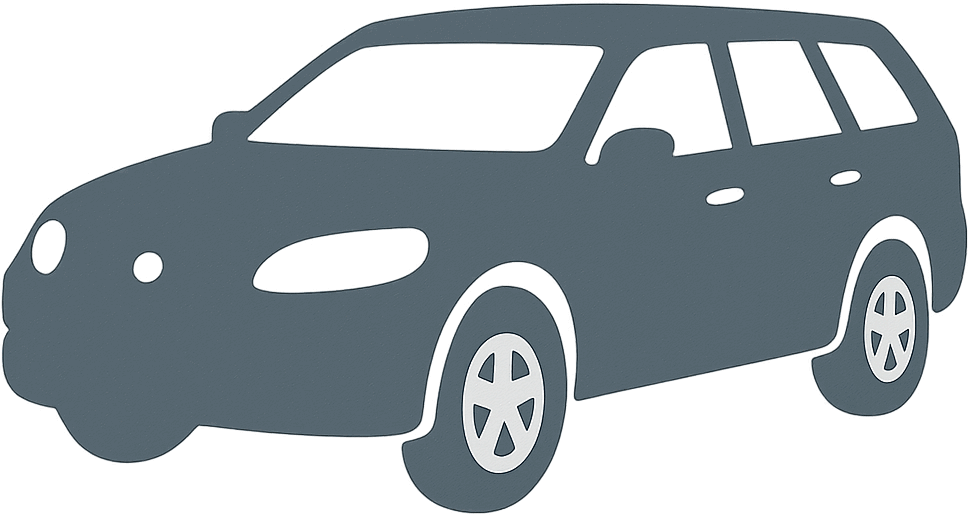 1967 Talbot Simca 1100 Break/tourisme Dimensions, Size & Specs
1967 Talbot Simca 1100 Break/tourisme Dimensions, Size & Specs
The Talbot Simca 1100 Break, produced between 1968 and 1980, is a classic compact station wagon reflecting the versatile design ethos of late 1960s and 1970s French automotive engineering. Originally launched in 1967, this generation of Simca 1100 offers an ideal blend of practicality and size, targeting families and drivers looking for a spacious yet manageable vehicle. As a station wagon (Break in French nomenclature), the Simca 1100 Break expanded the model’s functionality, featuring a larger cargo area compared to the hatchback version while maintaining a relatively compact footprint suitable for urban and suburban driving. Although specific dimensions vary slightly by year and trim, the Simca 1100 Break typically measures around 4 meters (approximately 157 inches) in length, with a width near 1.6 meters (about 63 inches) and a height close to 1.4 meters (around 55 inches). This translates to a vehicle that balances cargo capacity with maneuverability, ideal for family use or light touring purposes. The model's design prioritized maximizing interior space through a simple yet effective layout, including folding rear seats for added storage versatility. Weighing roughly between 900 and 1,000 kilograms (around 2,000 to 2,200 pounds), the Simca 1100 Break delivers efficient fuel consumption and adequate performance from its range of modest engines, matching the lifestyle needs of its era. Overall, the Talbot Simca 1100 Break stands out as a notable example of practical station wagons from the late 20th century, combining manageable dimensions with functional cargo solutions, making it a historically valued choice for enthusiasts of vintage European cars.
Discover the standout features that make the 1967 Talbot Simca 1100 Break/tourisme a leader in its class
Have a question? Please check our knowledgebase first.
The Talbot Simca 1100 Break/tourisme station wagon, produced between 1968 and 1980, features a compact but practical size for its era. Its length measures approximately 4,060 mm (159.8 inches), making it easy to maneuver in urban environments while still offering ample interior space. The width is about 1,590 mm (62.6 inches), which is typical for a small family wagon, providing reasonable stability without being too bulky. The height stands around 1,430 mm (56.3 inches), giving it a balanced profile that aids roof clearance and headroom. These dimensions contributed to the Simca 1100 Break’s reputation as a versatile and functional family car.
The cargo capacity of the Talbot Simca 1100 Break was quite competitive for the late 1960s and 1970s station wagon segment. With its rear seats folded down, the Simca 1100 Break offered a flat load floor and a sizable cargo volume, which was spacious enough to accommodate bulky items despite its compact exterior dimensions. Although exact liter capacity figures vary in sources, the practical design of the rear compartment maximized usable space relative to competitors. Compared to other small family wagons like the Ford Escort Estate or Peugeot 204 Break produced in similar years, the Simca 1100 Break’s flexible interior and relatively low loading height were considered advantages for everyday utility.
The Talbot Simca 1100 Break/tourisme is built on a wheelbase measuring approximately 2,490 mm (98 inches). This relatively long wheelbase for a compact station wagon contributed positively to ride comfort and interior space distribution. A longer wheelbase typically improves vehicle stability and reduces pitching movements over uneven road surfaces, which passengers would appreciate during longer journeys. Moreover, it allowed for better cabin space management, ensuring that both rear passengers and cargo could be accommodated more comfortably. The Simca 1100 Break's suspension tuning combined with the wheelbase length provided a good balance of agile handling and comfortable ride quality.
The curb weight of the Talbot Simca 1100 Break/tourisme typically ranges between 900 to 1,000 kilograms (approximately 1,984 to 2,205 pounds), depending on the model year and engine variant. This relatively light weight helped the vehicle maintain agile handling and contributed to decent fuel efficiency for a family wagon of its size and era. The light curb weight combined with modest engine options allowed the Simca 1100 Break to offer responsive urban driving dynamics and ease of parking. However, the lighter weight might have meant a firmer ride compared to heavier contemporary wagons, but it was an intentional compromise to enhance economy and maneuverability.
The Talbot Simca 1100 Break generally has a ground clearance of about 140 to 150 mm (5.5 to 5.9 inches), which was fairly typical for compact family wagons of its time. This moderate ground clearance allowed the vehicle to confidently navigate urban obstacles such as speed bumps and minor road unevenness without scraping the underside. While it could handle occasional rural or moderately rough surfaces, it was not designed for serious off-road use. Drivers venturing on rougher terrain or loose surfaces would need to exercise caution. Overall, the Simca 1100 Break was optimized for everyday paved roads with occasional mild rural or countryside excursions.
Yes, the Talbot Simca 1100 Break/tourisme fits comfortably within the dimensions of a standard single-car garage. Typical single-car garages have interior dimensions roughly around 6 meters (about 19.7 feet) in length and 3 meters (about 9.8 feet) in width. Since the Simca 1100 Break measures approximately 4.06 meters (160 inches) in length and 1.59 meters (62.6 inches) in width, owners can park it with ample clearance for opening doors and storing items. Its moderate height, about 1.43 meters (56.3 inches), also avoids clearance concerns. This classically compact size made it a convenient practical choice for families with typical garage spaces.
The Talbot Simca 1100 Break was a significant evolution compared to its predecessor, the Simca 1000 Break (or Simca 1000 Wagon), particularly regarding its dimensions and usability. The 1100 Break was longer and wider, with the 1968 model measuring about 4,060 mm (159.8 inches) in length, compared to the earlier Simca 1000 Break’s approximate length of 3,820 mm (150.4 inches). The width increase also contributed to better interior room and a more stable driving experience. Height remained fairly similar or slightly increased to enhance headroom, while the wheelbase was extended to improve cabin space and ride comfort. These dimensional upgrades meant the 1100 Break offered considerably more interior space and practicality, marking a clear step forward over the predecessor.
When compared to other compact station wagons from the same era—such as the Ford Escort Estate, Peugeot 204 Break, and Fiat 128 Familiare—the Talbot Simca 1100 Break occupies similar middle-ground dimensions. With a length of about 4.06 meters (159.8 inches) and width of 1.59 meters (62.6 inches), it is slightly longer and wider than some competitors like the Peugeot 204 (around 3.9 meters length) but roughly comparable to others like the Ford Escort Estate, which was about 4 meters long. The Simca 1100’s design emphasized maximizing interior space and load flexibility within a compact footprint, making it comparable in practicality though sometimes more spacious inside due to its hatchback-based platform. Overall, it balanced urban maneuverability with usable cargo capacity quite successfully among its peers.
The Talbot Simca 1100 Break/tourisme generally accommodates five passengers across two rows of seats, which was standard for small family wagons of its time. Interior dimensions in terms of legroom, headroom, and shoulder room favored practicality: the relatively long wheelbase of approximately 2,490 mm (98 inches) allowed adequate legroom for rear passengers. Headroom was sufficient for adults due to the wagon’s moderate height of about 1,430 mm (56.3 inches), and the wide cabin ensured reasonable shoulder space. The rear seats could be folded down to expand cargo capacity, reinforcing the 1100 Break’s versatile approach to interior space usage and family-friendly practicality.
During production from 1968 to 1980, the Talbot Simca 1100 Break came equipped with a variety of inline-four petrol engines ranging from around 1.1 to 1.3 liters in displacement. The base engines produced modest power outputs, typically between 44 to 85 horsepower depending on the specific model and market. These powerplants were paired with manual transmissions that favored fuel efficiency and reliability. Performance focused on delivering smooth everyday driving and practical usability rather than sporty acceleration. The 1100 Break’s lightweight and aerodynamic shape helped maximize efficiency and achieve respectable performance figures relative to competing wagons. Over the years, updates improved engine refinement and emissions compliance.
